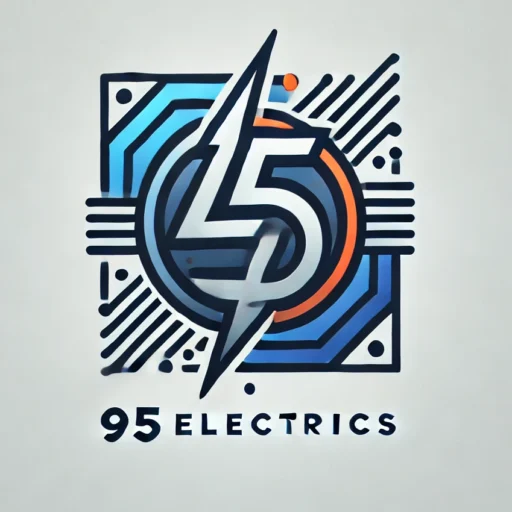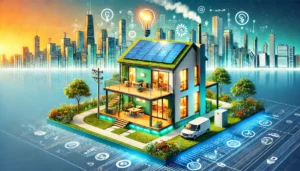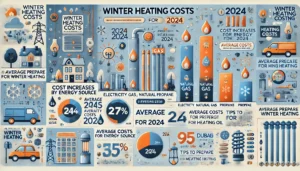In an era where there is global agreement that climate change and rising energy costs are critical problems, energy efficiency is no longer a choice, it’s a necessity. Through federal dollars meant for those home retrofits, Oregon is taking a giant step to make homes more energy efficient. The state is well positioned now to not only reduce greenhouse gas emissions, but also improve the comfort and cost effectiveness of residential living, with recent allocation of significant federal resources. This article looks at the impacts these initiatives will have on Oregon residents, the greater community, and the environment, and provides practical suggestions for how homeowners can predate these programs.
Energy efficiency—in particular, in the form of home retrofits—is a high priority for Oregon, and the U.S. government has been allocating a large amount of additional funding for this purpose. Oregon is about to get its hands on millions of dollars of federal money to pump into energy efficient home upgrades, the latest of many such incentives, as reported by OPB. The goal is to support statewide efforts to combat the twin difficulties of high energy use and environmental sustainability.

The initiatives will allow residents of all affinities to upgrade to energy efficient technologies such as high performance insulation, heat pumps, solar and smart energy management systems. It isn’t about just reducing the energy footprint, but making living spaces comfortable, affordable and sustainable. The approach, experts agree, can be a blueprint for other state level initiatives around the United States.
Read more: Home EV Charging Stations: A Convenient Solution for Plano, TX Homeowners
Why Energy Efficiency Matters: A Broader Perspective
Energy efficiency has greater significance than simply lower energy bills. This has an important role in reducing nation’s grid stress, lessening our dependence on fossil fuels and creating a healthier environment. The U.S. Energy Information Administration (EIA) says that roughly 20 percent of all energy used in the country is consumed in homes. Residential properties could improve substantially with respect to the efficiency, which would have a huge impact on overall energy demanded and greenhouse gas emissions.
Financial opportunity also means homeowners are getting energy efficiency. Households can save a lot by reducing energy consumption on their utility bills. According to the American Council for an Energy-Efficient Economy (ACEEE) energy efficient home upgrades can provide annual savings of 15 percent to 30 percent on energy costs, helping the individual homeowner as well as the economy.
Read more: Home Charging of Electric Cars is Cheaper than Petrol: A Look at the Savings
Key Programs and Incentives that are Available
With Oregon’s new funding, they’ve also made the funding as accessible as possible to homeowners across the spectrum, working particularly well for lower and middle income families that may find themselves unable to pay for the upgrades out of pocket. The main programs under this initiative include:
- Home Energy Rebates: The rebates include installation of energy efficient windows, insulation and heating systems. Depending on your income bracket, homeowners can expect to get a rebate that will cover a large chunk of the money.
- Weatherization Assistance Program: This program is directed toward low income households and seeks to assist in making homes more energy efficient by insulating, sealing the home for lack of air, and reducing the need for energy to heat and cool.
- Solar Energy Grants: The federal funds, meanwhile, focus on renewable energy integration, and include grants to install solar panels. These grants are intended to increase the accessibility of renewable energy, helping to decrease long run energy costs, and to the state’s renewable energy targets.
Read more: Exploring Electric Vehicle Rebates Across the United States
Besides incentivizing energy efficiency, these programs stimulate economic activity by generating such job opportunities for contractors, electricians, and technicians to do retrofitting work.
|
|
|
5
|
Case Studies: Success Stories from Oregon
As an example, I use the case of a family, living in Portland, which recently finished an energy retrofit program. They reported a 25 percent drop in their energy bills through the installation of upgraded insulation, energy efficient windows and a modern heat pump. Not only did they save on the often exorbitant taxes, but these shots also added to the value of their home.
Like the Weatherization Assistance Program, a community housing project in Eugene received help, and 20 low income households benefited from improved living conditions and reduced collective energy costs of about 30 percent. But these success stories underline how real world impact that these programs have, since the energy efficiency investments are highly profitable, both financially and environmentally.
Read more: Burlington Electric Department to Expand EV Charging Infrastructure with Federal Support
Expert Opinions: The Road Ahead
Experts on energy have commended Oregon for using federal money to boost energy efficiency. ‘Second Run’ by Jennifer Thompson, an energy policy analyst with the Oregon Department of Energy: ‘These funds are a game changer for Oregon homeowners.’ Just reducing emissions isn’t enough: we’re also providing residents with the means to take control of their energy futures,” explained Robie.
However, challenges remain. There are some experts who warn that awareness and accessibility must be given highest priority to really make sure that all the homeowners who are eligible are able to participate. Key to that, outreach and education will be important to ensuring that these are funds that get to the communities who need that help the most.
Read more: North Carolina: $1 Million Grant to Expand EV Charging at Community Colleges
How to Get Involved: Homeowner Actionable Takeaways
If you’re an Oregon resident looking to benefit from these programs, here are some actionable steps you can take:
- Assess Your Home’s Energy Needs: An energy audit can be conducted to see what areas of your home would be best improved through efficiency upgrades. Free or very low cost energy audits can be obtained from many local utilities.
- Explore Available Rebates and Grants: So visit either Oregon’s Department of Energy website or your local utility provider to learn more about the rebates and grants you have available to you. However, each program requires different needs, so what incentives are you looking for so you can understand which programs apply to you.
- Take Advantage of Professional Assistance: Have certified contractors use their services to upgrade your home and provide you with rebates only if the upgrades meet required standards for efficiency and quality.
- Consider Renewable Energy Options: But if you can, look for grants for solar energy to reduce your reliance on grid electricity even more. This won’t just cut your carbon footprint but will add value to your home.
That the state is using federal dollars for energy efficiency is a promising step in Oregon’s path toward sustainability. To address not only broader environmental challenges, but to improve the quality of life for Oregonians in inexpensive and efficient ways, these initiatives will reduce energy consumption, cut greenhouse gas emissions, and especially make homes more affordable. That means the state as a whole is one step closer to meeting those climate goals, while homeowners stand to make some money.
Read more: Home Heating Costs for Winter 2024: What to Expect and How to Prepare
With such programs coming out, it’s important that residents remain aware and make changes. Upgrades that make a home more energy efficient today can help a cleaner, greener future and help lower energy bills and increase home comfort immediately. There are opportunities, and the time is now.
Test Your Knowledge on Oregon’s Energy Efficiency Initiative
| 1. Are federal funds being used to incentivize energy-efficient home retrofits in Oregon? |
| 2. Which of the following are included in Oregon’s energy efficiency program? (Select all that apply) |
|
|
| 3. Select the program that specifically targets low-income households. |
| 4. Is the purpose of the energy efficiency initiative to reduce greenhouse gas emissions? |
| 5. Toggle to indicate if solar panel installation is part of Oregon’s funding initiative. |
| 6. How much can energy-efficient home upgrades save annually on energy costs according to ACEEE? |
References
- Oregon Public Broadcasting. Oregon to Receive Federal Funds for Energy Efficiency Home Retrofits and Rebates. OPB, October 2, 2024.
- U.S. Energy Information Administration. Residential Energy Consumption Overview. EIA, 2023.
- American Council for an Energy-Efficient Economy. Benefits of Energy-Efficient Home Upgrades. ACEEE, 2024.
- Oregon Department of Energy. Weatherization Assistance Program Overview. Oregon Department of Energy, 2024.
- Thompson, Jennifer. Expert Insights on Oregon’s Energy Efficiency Initiatives. Oregon Department of Energy, 2024.






